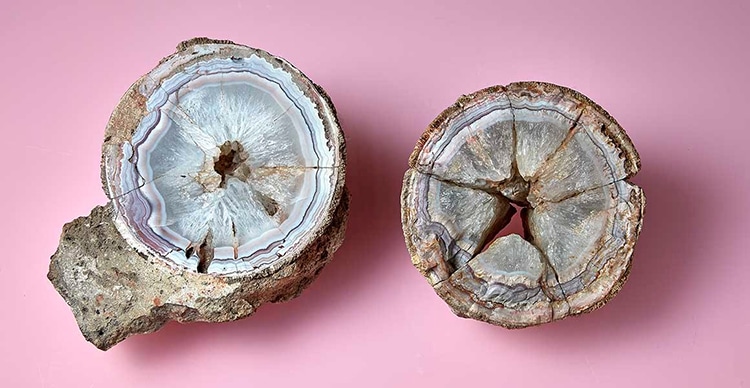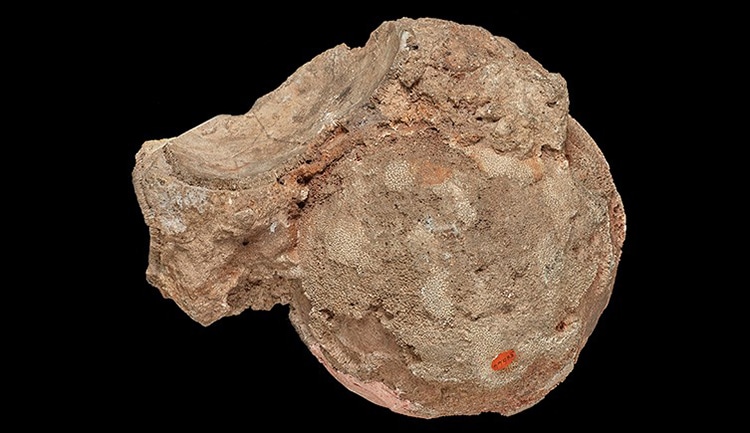Agate crystals apparently grew inside a titanosaur egg.
In 2018, a minerals curator named Robin Hansen selected the pretty stone to display at the institution.
Museum paleontologists Professor Paul Barrett and Dr. Susannah Maidment took a look.

Agate crystals apparently grew inside a titanosaur egg. (Photo:Natural History Museum)
They noted that the rock had an external texture that resembled that of a dinosaur egg.
Titanosaurs were a group of four-legged, long-necked dinosaurs who roamed across the world in the Cretaceous period.
Further tests with CT scans were unhelpful due to the dense rock material.

The surface retains the dinosaur egg’s texture. (Photo:Natural History Museum)
These factors all hint at the surprising truth.
Additionally, the object is thought to be about 67 million years old.
It was discovered in India by Charles Fraser between 1817 and 1843.

An example of a titanosaur, in this case a Ampelosaurus atacis. (Photo:Wikimedia Commons, Public domain)
So how did a fossilizeddinosaur eggbecome filled with agate crystals?
Basalt rock would have formed around the egg shells, the material inside eventually rotting away.
The end result is a surprising, beautiful artifact that unites both mineralogy and paleontology.
The surface retains the dinosaur egg’s texture.
An example of a titanosaur, in this case a Ampelosaurus atacis.